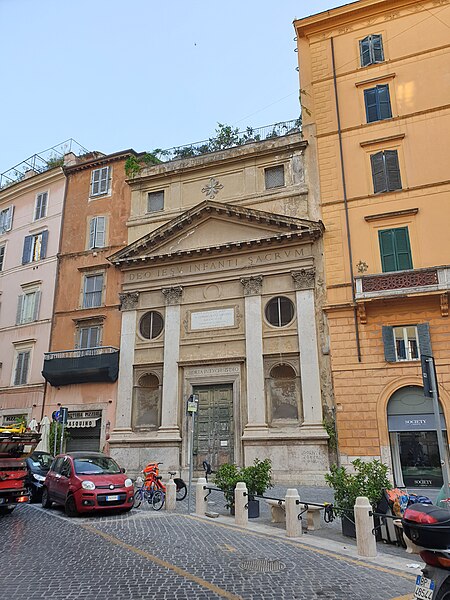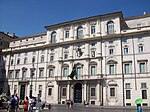Natività di Gesù
Churches of Rome (rione Parione)Italy Roman Catholic church stubsNational churches in Rome

Natività di Gesù is a church on Piazza Pasquino in the Parione rione of Rome. It is the national church in Rome of the Democratic Republic of Congo. It was built at the end of the 17th century for the Archconfraternity of the Company of the Nativity (known as the Agonizzanti), formed in 1616. Pope Innocent XII granted a letter giving the Archconfraternity the licence to build a church as its oratory. It was rebuilt several times, the last being in 1862, when it took on its current appearance.
Excerpt from the Wikipedia article Natività di Gesù (License: CC BY-SA 3.0, Authors, Images).Natività di Gesù
Piazza di Pasquino, Rome Municipio Roma I
Geographical coordinates (GPS) Address External links Nearby Places Show on map
Geographical coordinates (GPS)
| Latitude | Longitude |
|---|---|
| N 41.898 ° | E 12.472 ° |
Address
Chiesa della Natività di Gesù
Piazza di Pasquino
00186 Rome, Municipio Roma I
Lazio, Italy
Open on Google Maps










